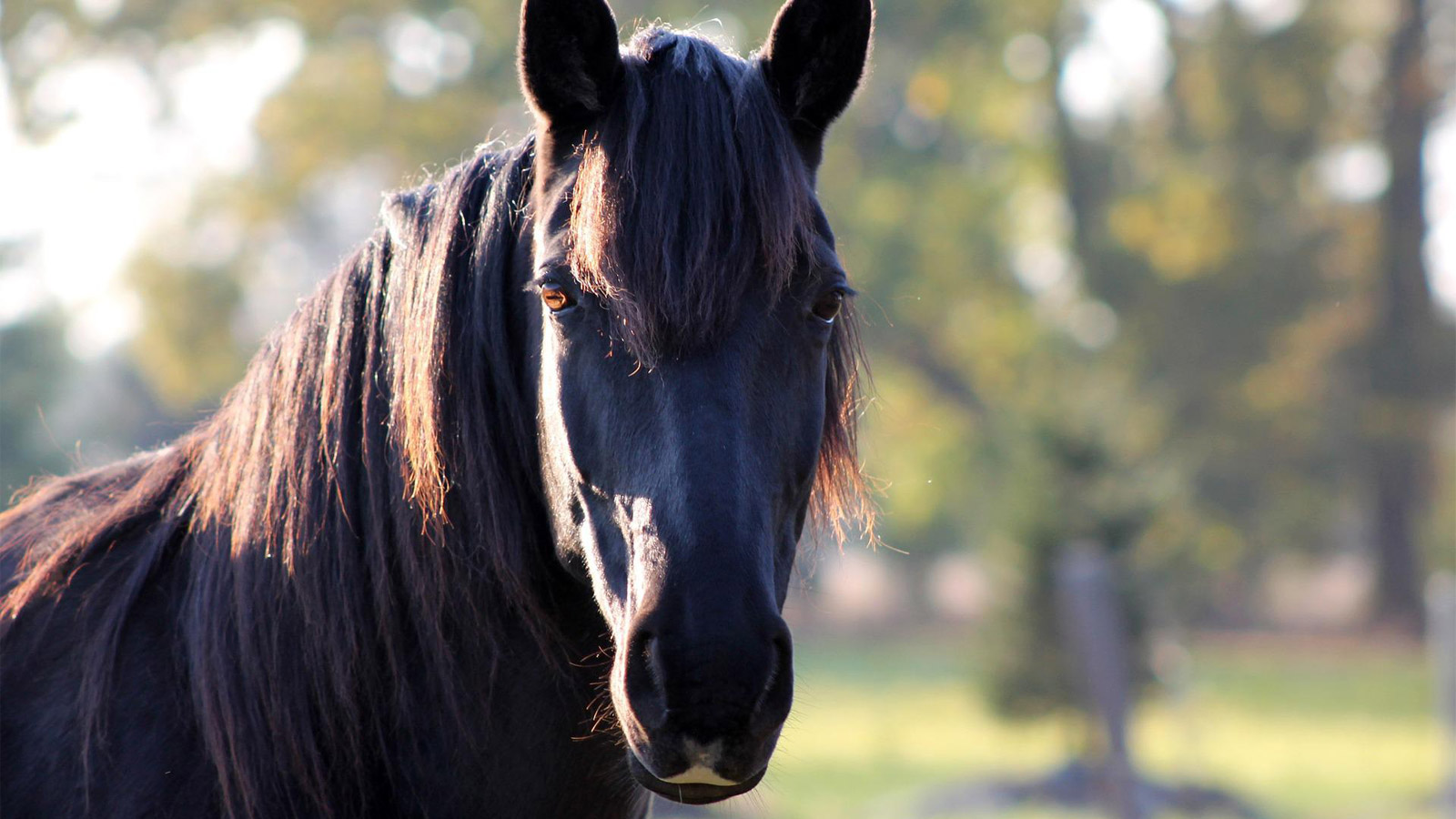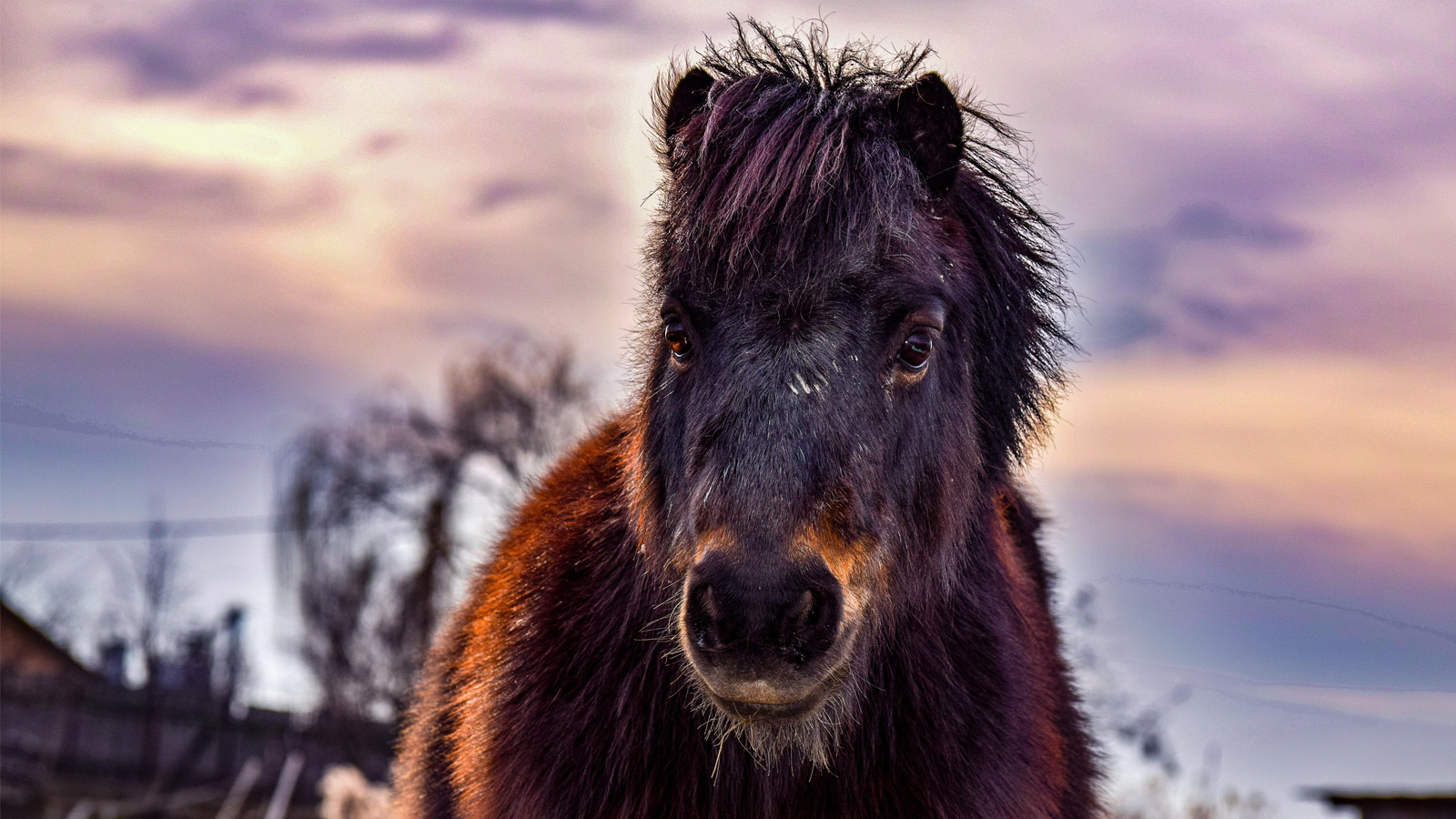It can be hard to visualise spring when your days feel caught in an endless cycle of chilly winter horse care. But rest assured spring will come and with it a fresh set of challenges for the horse owner. By giving your spring routine some advance thought in the winter months, you’ll be all set by the time the new season rolls around.

Changing when and for how often your horses have access to spring grass can help with weight management.
SPRING’S TOP CHALLENGES
You know spring is here when your horse starts getting some extra fizz after a few days on fresh, green pasture. In some areas of the country, spring grass seems an insurmountable force of nature. Good management is essential for horses prone to laminitis, weight gain or pasture sensitivity. For these sorts of horses, preparation is key. By eliminating or reducing the risk factors, you are a step ahead of the health issues that come hand in hand with spring grass. Unfortunately, by the time you see symptoms in your horse, the problem has likely outpaced you.
The first step you can take to get ahead of the problem is identifying the paddocks most at risk of rapid pasture growth. Another issue to be mindful of here is if the pasture is bare, weeds will most likely be the first thing you see when that spring rain hits. So you may need to spray these weeds or slash them before they go to seed. If the weeds have caught you off guard, it’s important to identify which ones might be toxic to your horse.
The second step is planning your pasture restriction method and, if necessary, having some hay on hand to meet your horse’s roughage requirements while the paddock is a no-go zone. Being able to divide large paddocks into several smaller sections is a great way to ensure you’re fully managing what your horse is getting access to, and it can make that precious spring/summer pasture last longer. However, should the worst happen and your horse reacts to the grass or weeds that it’s grazing, know what action to take and don’t hesitate in calling the vet.
One important point to make is if you are restricting your horse’s grazing time or space, you still need to make sure they are getting enough roughage to meet the individual horse’s requirements. Your horse’s digestive system is designed to have a continuous stream of roughage entering its body, and so if your pasture isn’t a good option, you need to find a roughage that is a bit more appropriate such as a low-sugar hay. For laminitic horses, a good method for reducing their sugar intake is allowing them to graze the pasture at night when the sugar level in the grass is lower than during the day. This can also be a good option for horses who need help managing their weight if they are on the “apple-bum” side.

Your horse’s nutritional needs change from season to season.
GET AN EXPERT OPINION FOR NUTRIENTS
Whether your horse is a good doer, a poor doer, or just sensitive to spring in general, it’s a smart move to ask, “Does my horse’s winter diet make sense in spring?”
If your horse is on pasture, then that pasture is going to be richer in spring, meaning you might need to dial back the calories in your horse’s hard feed to avoid excess weight gain.
On the other hand, if you’re having to restrict your horse’s diet in spring, then your horse may require a nutrient-rich concentrate or vitamin supplement to make up for what was previously sourced from pasture.
A further consideration is your horse’s workload. Did you dial down the activity for your horse during the colder months? If yes, then your horse might need a diet that better supports its energy requirements when you dust off the saddle.
Navigating these sorts of questions can feel overwhelming. Take the guesswork out of feed by reaching out to an equine nutritionist. It’s likely an easier and less expensive exercise than you think! Utilise the free diet analysis services offered by companies such as Hygain or Mitavite to determine if your horse is getting what it needs for optimum health – and behaviour!
Hygain equine nutritionist Holly Mills says the surge of growth in pastures coming into spring will mean the grass is quite rich in sugars. “With laminitic horses, you may want to restrict them to this grass, but if you have a good doer, the pasture can be really good at maintaining condition. If your horse is like this, you may also want to choose a product that is concentrated so it can provide a very good level of nutrients in a small quantity – so you can make sure your horse is still getting everything they need that the grass might be lacking. Something like Hygain Meta Safe is a very good low sugar concentrated option to ensure that horse is getting its vitamin and mineral requirements through the springtime. Particularly designed for good doing horses, but also specifically designed for horses with laminitis or metabolic issues like Equine Metabolic Syndrome (EMS) or Cushings.
“Also during springtime, the weather is starting to warm up but it’s also often quite wet, depending on where you live. It’s a really great environment for mycotoxins to thrive so you might want to consider popping your horse on a mycotoxin binder just to make sure you’re reducing the risk of them being compromised by mycotoxins. Hygain Safeguard EQ is a broad-spectrum mycotoxin binder and it binds to mycotoxins found in the horse’s system and escorts them out through manure.”

Make sure your saddle continues to fit your horse throughout the year as their body changes from season to season.

Dividing one large paddock into several small sections is a great way to manage your pasture usage and your horses’ access to it.
SORT YOUR FENCING
No matter if you’re a seasoned veteran of pasture management or new to living on property, it never hurts to check your fencing: Have you got sufficient hot tape if pasture needs to be restricted? Did all of your temporary fence posts make it through last spring intact? Checking in on your supplies can save you from a last-minute dash around the produce store to hunt down equipment that’s in hot demand (or out of stock!)
If you are looking at a more permanent fencing option, then winter can also be a good time to plan new yards, smaller paddocks and property improvements. Get confidence in your plan, book your tradespeople and give yourself the luxury of time.
CHECK YOUR SADDLE FIT
Horses change shape with condition and workload. Get on the front foot by booking an appointment with a saddle-fitter well in advance of the booking date. That way it’s in both of your diaries and you’ll avoid a situation where your favourite fitter is booked out.
CHECK YOUR RUGS
As horse owners it’s highly likely you’ve encountered a situation where the weather has warmed unexpectedly and you’ve found yourself short of a rug. Perhaps it comes down to that broken leg strap that you kept meaning to fix, or the realisation that last year’s spring wardrobe sustained far more holes than you remembered. Whatever the case may be, make sure your rugs are repaired, clean and ready to go once the weather starts to change.
CHECK THE FIRST AID KIT
Spring weather is often preceded by rain and mud in abundance! These are perfect conditions for an unexpected abscess. It’s also a season where we tend to be confronted by more paddock scrapes as a result of horses feeling energetic. Take a peek inside your horse’s first aid kit and check that every item is still present and accounted for. Also, check that your supply of anti-fungal and antiseptic lotions is within their use-by date and ready for action.
MAKE CARING FOR YOUR HORSE EASIER
Finally, we touch on a point that isn’t limited to any particular season but is worth bringing up just the same. As horse owners we’re often so intently focused on caring for the animals we love that we fail to notice areas where we can make tasks easier!
Find a quiet moment to think about what would make a positive difference to the sorts of tasks you perform when caring for your horse. Have you been struggling with the same leaky feed buckets for years? Or maybe your wheelbarrow is decades past its prime. Where possible, identify the little changes that will help you get more out of your day. Take care of yourself, prepare and enjoy time with your horses. EQ
YOU MIGHT ALSO LIKE TO READ:
Giving Back to Pony Club – Equestrian Life, June 2022
A ‘Hangry’ Horse is an Unhappy Horse – Equestrian Life, May 2022
Maximising Absorption in Your Horse’s Diet – Equestrian Life, April 2022
Finding the Way Back to the Saddle – Equestrian Life, February 2022
Electrolytes: Getting Out What You Put In – Equestrian Life, January 2022
A Good Gut Feeling for Performance Horses – Equestrian Life, December 2021
Gary’s Guide to Building Lean Muscle – Equestrian Life, November, 2021
In a Bind: The Role of Toxin Binders – Equestrian Life, October, 2021
Hold Your Horses: Feeding for Coolness – Equestrian Life, September, 2021
The Importance of Vitamin K – Equestrian Life, August, 2021




